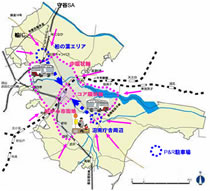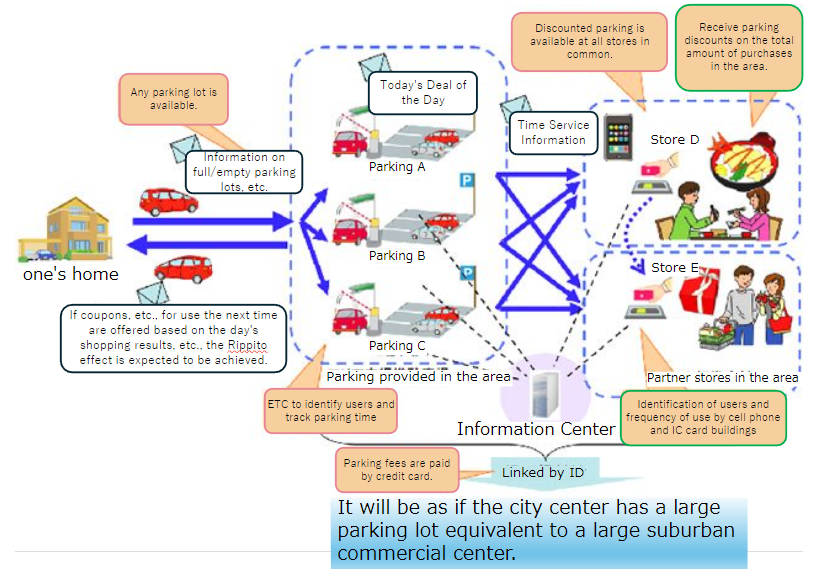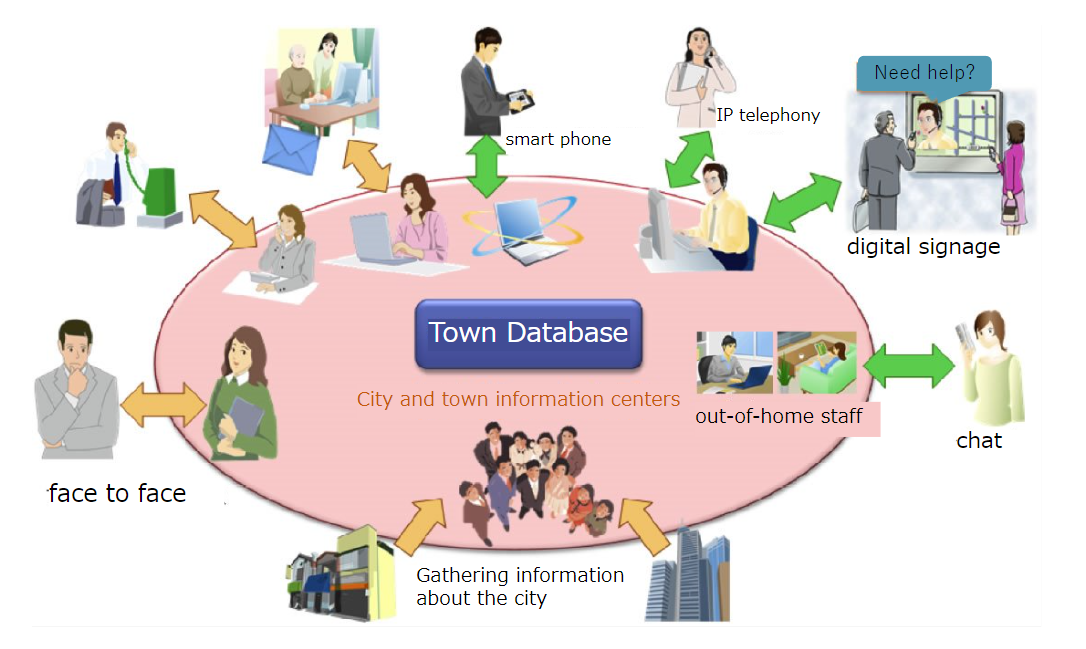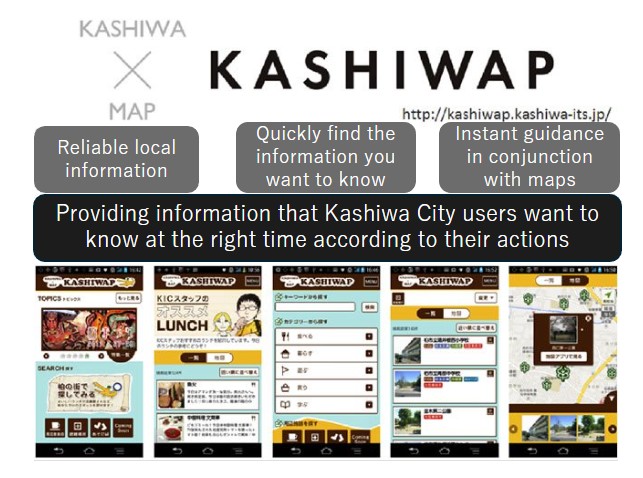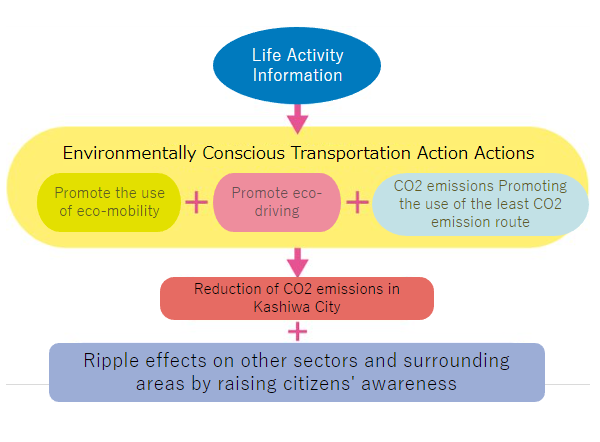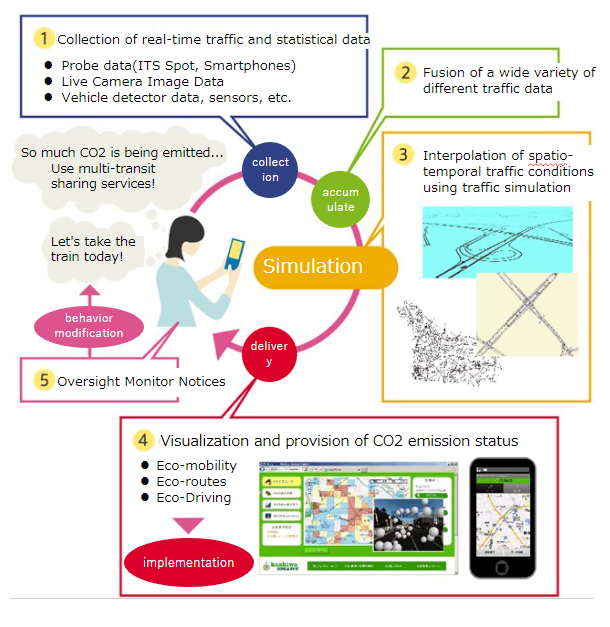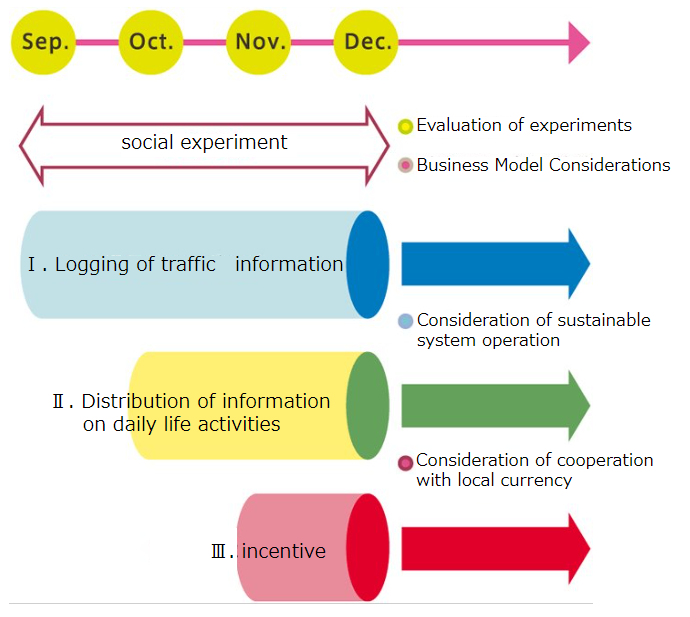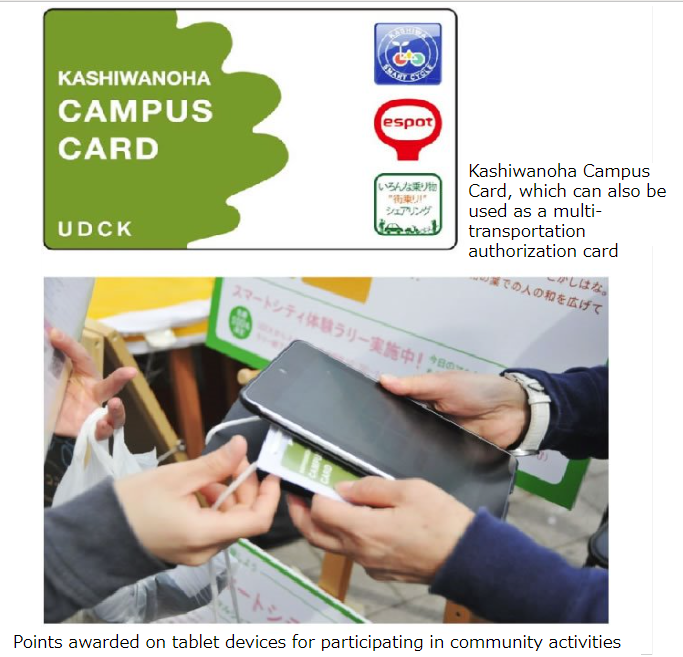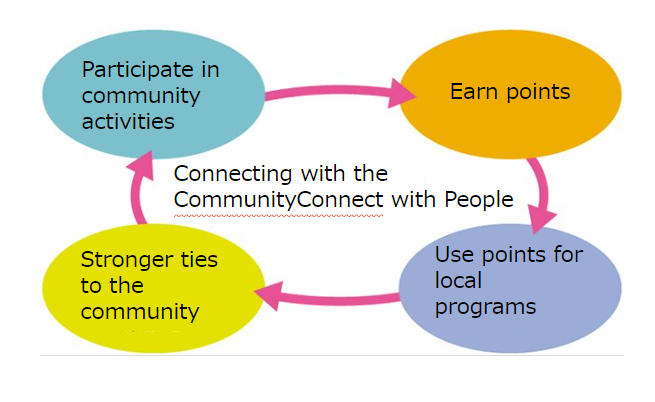Creating an environment that encourages citizens’ interest and motivation is the key to successful ITS.
In order to encourage citizens’ active involvement in travel and transport, it is important to create more opportunities for them to take an interest in local transport in their daily lives. It must be a system that can be understood naturally in everyday life, rather than being imposed unilaterally, otherwise it will not have the predicted effect.
For this reason, it is important to deepen cooperation with citizens and communities. In the context of local life, opportunities are created for people to naturally think about transport issues through exchanges and participation in events. In a broad sense, creating an environment that supports mobility and transport in cooperation with such local programmes is also an important ITS initiative.
We will enhance the relationship between citizens and ITS by raising interest in ITS through events and social experiments, using local information networks to disseminate information to support smooth travel, and providing incentives to motivate people to participate in social experiments.
The Kashiwa ITS Smart City aims to realise an ITS that grows together with people and the city, while educating citizens.
Research on ‘parking lot coordination services’ – ICT-assisted coordination of multiple parking lots within an area and revitalisation of the city centre.
[Background and purpose of research.]
The proliferation and suburbanisation of cities due to the development of motorisation has led to the hollowing out of city centres (so-called shuttered streets) in many places. From the perspective of municipal finance to maintain and develop an ageing society in the future, it is necessary to design and pursue compact cities, and in city centres where essentially sufficient road space capacity cannot be secured, it is necessary to implement TOD (Transit-Oriented Development) centred on public transport. In Japan, where the legal system and other preconditions necessary for prioritising public transport are not yet in place, despite the world’s most advanced super-aged society with an ageing population rate of 23.3% (as of October 2011), cars often have free access to the city centre, making the above-mentioned transit-orientated development in public transport priority areas in many regions The above-mentioned public transport-first transport town planning is extremely difficult in many places. Assuming a future society in which old-age care is common even in rural and urban areas where public transport services are unstable or inadequate, where withdrawal has been liberalised along with the entry of new routes, it is also a realistic and urgent task to consider measures to revitalise the city centres based to some extent on the assumption of car use.
Furthermore, in order to ensure the smooth implementation of TOD, it is also essential to develop a hierarchical ring road structure that eliminates the inflow of transit traffic into the city. However, as it takes time to build consensus on the necessary infrastructure investment for the future society, there are high expectations for the use of soft measures, including ITS.
This study therefore proposes a ‘method for balancing traffic congestion problems and the revitalisation of city centres’, focusing on the area utilisation of parking lots using ICT, using the former city centre of Kashiwa City, Chiba Prefecture, as a model.
[Overview of the concept and study of the parking linkage service].
The medium- to long-term urban planning master plan announced by Kashiwa City in June 2009 declares the development of the traffic movement environment in the form of an urban axis and road network, with the aim of realising a “Kashiwa-version compact city” characterised by a multi-nuclear network structure. In order to realise an urban transport plan that reduces the concentration of traffic in the city centre by diverting passing motor traffic that has no direct business in the city to the ring road through a hierarchical road system, the plan includes the development of Chiba-Kashiwa Road as an outer ring road, fringe parking lots in the middle ring road, a public transport priority area (transit mall) within the core ring road, and the most The development of pedestrian priority areas in the inner city centre must be promoted in an integrated manner. In a situation where signs of decline in the city centre have already been confirmed, it can be said that it is necessary to work sequentially from transport management, focusing on soft measures with less infrastructure development in the city centre. Therefore, this study targets soft measures for the effective utilisation of parking spaces with the use of ITS.
In the current Kashiwa Station area, visitors by private car tend to concentrate in the large department store car park on one side of the station. On the other side of the station, even if there are plenty of parking spaces available, there is no mutual discount service, which can cause congestion waiting to enter the parking lot.
The current discount service for parking fees is being standardised within the city centre, using ICT to create a system whereby customers can receive the same discount service no matter which parking space they park in and which shop they shop at. Furthermore, by introducing a parking fee discount service appropriate to the total amount of purchases made at each shop, it is hoped that this will increase the circulation of users and increase the time spent in the car park, while reducing the concentration of parking use.
In this way, by using ICT to link multiple parking facilities in an area and offering a common linked discount service for parking fees based on visitor purchases throughout the town, the demand for parking and the supply from parking operators can be adjusted to balance out the uneven distribution of time and space. The introduction of such a parking ITS will enable a business model that benefits all parties concerned by circulating part of the increased sales of commercial operators due to the increased amount of purchases in the city centre as a result of visitors’ increased time spent in the city.
Kashiwa City local information service ‘KASHIWAP’ – Tourism ITS that thickens the ‘connection’ between people and the city.
[Purpose of the experiment]
The purpose of this experiment is to contribute to the revitalisation of the local area by using ICT to more effectively disseminate information held by the city’s information centres and city hall. In Kashiwa City, the Kashiwa Information Centre has traditionally provided community-based information to visitors, mainly through face to face information about the JR Kashiwa Station area, but also by telephone, email, website and SNS. The information accumulated through these activities has now been digitised and made available to the Kashiwa Information Centre as a valuable ‘town database’. In addition to the existing means, the Kashiwa Information Centre aims to introduce the attractions of the town using the rapidly spreading smartphone and digital signage installed at key locations in the town, to make more people aware of the Kashiwa Information Centre, to increase the number of visitors and to further expand the town’s vitalisation. The aim is to further expand the city’s revitalisation while increasing the number of visitors.
[Outline of the experiment]
In March 2013, a trial experiment was launched with the Kashiwa City regional information service KASHIWAP, a coined word that combines the words KASHIWA and MAP. KASHIWAP is a web service that delivers highly reliable information from the Kashiwa Information Centre and local information around Kashiwa Station to smartphone users using a location-based information platform. KASHIWAP aims to “provide new value” to people living in the Kashiwa suburbs, and to “make people fall in love with Kashiwa” by providing extensive support for people visiting the city from afar. KASHIWAP also has a function that allows you to quickly search the city’s database and instantly displays a map of shops, evacuation centres and other ‘locations’ linked to the information you have searched for, helping you to get to the place you are looking for. Please use KASHIWAP. 「KASHIWAP」⇒ http://kashiwap.kashiwa-its.jp/
[Operation of the experiment]
This experiment is being conducted mainly by Kashiwa City and companies that make up the Kashiwa ITS Promotion Council, with the cooperation of the Kashiwa Information Centre.
Kashiwa Smart Mobility Promotion Experiment – Promoting changes in the traffic behaviour of the general public through the distribution of CO2 information and other information on daily life activities.
[Research background]
Currently, CO2 emissions from the transport sector in Japan account for approximately 20% of the total, 90% of which comes from automobile traffic, and the public and private sectors are working together to reduce these emissions. However, it is not only necessary to rely on vehicle-specific measures based on vehicle technology, but it is also necessary to think more about the way we travel, such as promoting eco-driving and the use of public transport, as it is the responsibility of the people who travel. The use of eco-driving and public transport is also a responsibility of the mobile population. Conventional traffic information services, such as car telematics, have tended to focus exclusively on drivers on the road and on increasing the convenience of car use. In the future, when more consideration for the environment is required, users will be able to get a bird’s eye view of how much CO2 is being emitted by their daily car use and the resulting traffic congestion even before they get on the road, and truly feel this, and will not only be able to change basic transport behaviour such as changing routes and departure times, but also to practice eco-driving to reduce fuel consumption, and to make public transport more environmentally friendly. It is also necessary to create a strategic mechanism to promote more effective awareness-raising, such as practising eco-driving with reduced fuel consumption, switching to public transport, installing eco-driving equipment and replacing vehicles with environmentally friendly ones.
[Objectives of the study.]
CO2 emissions from the transport sector in Japan currently account for approximately 20% of total CO2 emissions, 90% of which come from automobile traffic, and the public and private sectors are working together to reduce these emissions. However, it is not only necessary to rely on vehicle-specific measures based on vehicle technology, but it is also necessary to think more about the way we travel, such as promoting eco-driving and the use of public transport, as it is the responsibility of the people who travel. The use of eco-driving and public transport is also a responsibility of the mobile population.
Conventional traffic information services, such as car telematics, have tended to focus exclusively on drivers on the road and on increasing the convenience of car use. In the future, when more consideration for the environment is required, users will be able to get a bird’s eye view of how much CO2 is being emitted by their daily car use and the resulting traffic congestion even before they get on the road, and truly feel this, and will not only be able to change basic transport behaviour such as changing routes and departure times, but also to practice eco-driving to reduce fuel consumption, and to make public transport more environmentally friendly. The research results are also expected to be used to develop a strategic mechanism for more effective awareness-raising, such as practising eco-driving with reduced fuel consumption, switching to public transport, installing eco-driving equipment and replacing vehicles with environmentally friendly ones.
[Effects of practical application of research findings]
The research aims to reduce CO2 emissions from vehicles in Kashiwa by 8%. This target has been set based on Kashiwa City’s global warming countermeasures plan and the results of existing surveys and research, and assumes a higher effect than existing similar social experiments. The experiment also targets citizens other than motorists, and is expected to have an appealing effect in areas not related to transport, such as saving electricity, for example.
[Experiment overview]
A demonstration experiment using the lifestyle activity information feedback system constructed in this study has been initiated. Approximately 150 monitors were recruited from citizens living in Kashiwa City and surrounding municipalities. The period is three months from September 2013, divided into three periods: I. Period for understanding everyday traffic behaviour, II. Information provision period, and III. Period for granting incentives according to the amount of CO2 reduction and participation in the experiment (II. and III are added in order to I. and the experiment proceeds). III. For the incentives (unique points in this study), the monitors will be divided into two groups and their sensitivity will be evaluated. anyone can participate in the experiment by downloading the smartphone application developed in this study from Google Play and registering as a monitor. However, there is no incentive for III. Instead, Kashiwanoha Eco-points (a local currency actually used in Kashiwa City) are awarded for using the app more than the prescribed number of times.
[Operation of the experiment]
This research is being conducted by the universities and companies that make up the Kashiwa ITS Promotion Council on behalf of the Ministry of Internal Affairs and Communications*.
*SCOPE: Strategic Information and Communications R&D Promotion Programme
Kashiwa-no-ha Point Programme – Linking with the Kashiwa-no-ha Point Programme to motivate citizens to participate.
[Background of the study.]
The Kashiwanoha Point Programme was launched in the Kashiwanoha Campus area in March 2013, utilising the Kashiwanoha Campus Card, a common regional card. The main feature of this point programme is the menu for granting and using points. While most conventional point programmes are economic incentive-based, the Kashiwanoha Point Programme is a unique programme in which points can be accumulated by participating in various local activities, such as clean-up and planting activities in front of stations, and these points can be spent at local marches and workshops. The points can then be spent at local marches and workshops. 350 citizens have already registered and participated in this programme, which activates connections between communities and people, and between people and people.
And this October, Kashiwa ITS Smart City also started working with the Kashiwanoha Point Programme. A new point function will be added to the regional cards that have been used as authorisation cards for the multi-transport sharing system, and a social experiment will be conducted in which points will be awarded for contributing to the reduction of CO2 emissions while utilising information on daily life activities. We believe that this kind of collaboration is an important approach not only to motivate citizens to participate, but also to get more citizens interested in ITS.
The common regional card uses a contactless IC card, similar to the ticket systems widely used in public transport, such as railways and buses. In the future, the aim is to integrate the system so that payments for various modes of transport for regional travel, payment of parking fees, payments at department stores and department stores, payments at convenience stores and local shopping areas can all be handled with a single common card. By making it possible to use a single common card for public transport payments, regional point programmes and point use at regional shopping areas, it will also be possible to provide incentives for regional and environmental contribution activities, such as the granting of eco-points to citizens who take the best transport behaviour for the region, while also contributing to regional revitalisation through the use of points within the region. The system can also contribute to regional revitalisation, such as through the use of points within the region.

